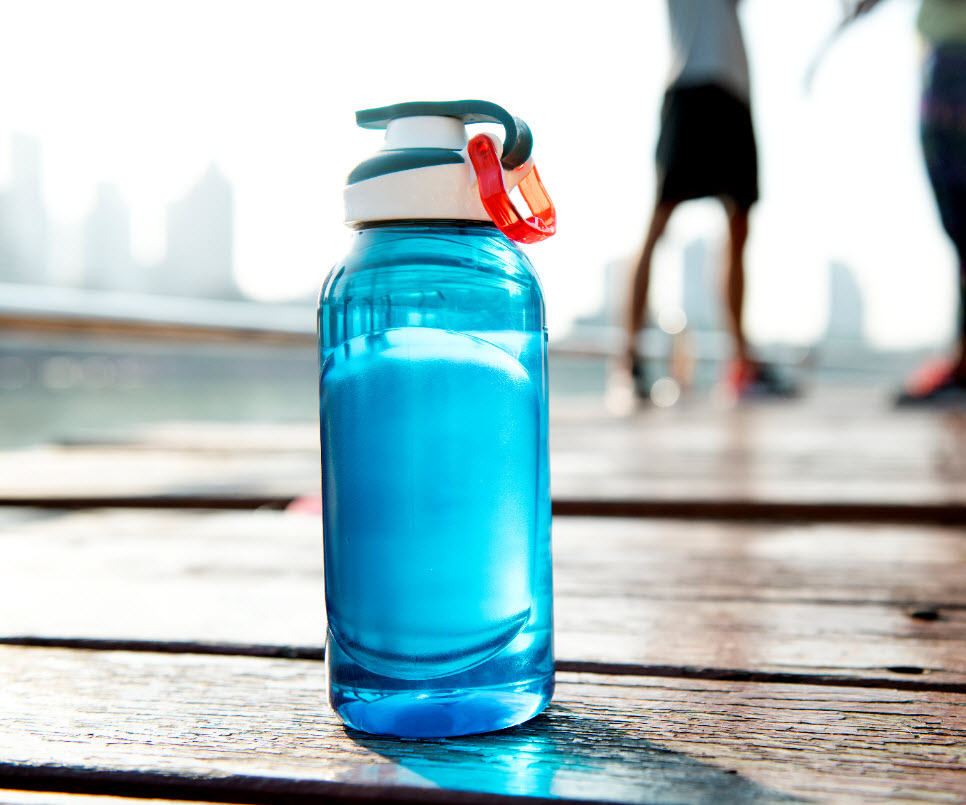Parkinson's and Hydration
Summer has come in with a roar here in Tucson and for many of our PWR! family. With summer heat and humidity (or dryness, if you live here in Arizona) comes dehydration. Unfortunately, people with Parkinson disease are more likely to get dehydrated to begin with, and it may cause some serious symptoms.
Read below for some tips to improve your hydration and keep your body working like a well-oiled machine.
Drinking fluids might be a little bit harder if you have PD. Why?
- Your medications can make you more dehydrated. Try to time it so that you drink water when you take your medication each day.
- People with Parkinson disease may experience constipation, which is when it is difficult to pass bowel movements. Drinking water or eating foods with high water content can help to reduce constipation.
- You might have difficulty swallowing, drooling (sialorrhea), or more sweating when you have PD. Talk to you neurologist or speech therapists about options to control some of these symptoms, so that you aren’t losing as many fluids.
- You may lose the drive to drink, so you may not feel thirsty when you are already beginning to get dehydrated.
That’s why it’s SO important to keep on top of hydration!!
According to the Mayo Clinic, signs of dehydration in an adult include:
- Extreme thirst
- Less frequent urination
- Dark-colored urine
- Fatigue
- Dizziness
- Confusion
If it is hard to get 8 or more glasses of water in per day, consider the following tips to increase how much water you take in:
- Consider alternative ways to get fluids. You may try using a water filter (filled with fruit or herbs), eating high-water fruits (like watermelon and kiwi), drinking electrolyte replacement drinks (like Liquid IV), or mixing a bit of lemon or orange juice to make your fluids more appealing. You can also try other drinks, but avoid drinks that have a lot of caffeine or alcohol, as they may dehydrate you.
- Set a timer to remind you to drink water.
- Time your water drinking to when you take your medication.
- Get a water bottle that is easy to carry, so that you don’t lose your drink in the house while life gets busy. Consider using a water bottle with a strap, like this, or perhaps a backpack, like this so that you can keep your hands free.
- When you exercise, plan to drink before you exercise, so that you don’t enter a deficiency early.
As you drink more fluids, your brain will be clearer, and you may have more energy. Happy hydrating!


Our goal is to make sure you’re always empowered and informed.
We offer handouts, downloads, research updates, Wellness Series talks, retreats with knowledgeable speakers, in-person and virtual wellness consultations, and in-person physical therapy visits. We are here for our PWR! Members every step of the way.
We’re excited to have you join us!
References:
Dehydration - Symptoms and causes - Mayo Clinic. https://www.mayoclinic.org/diseases-conditions/dehydration/symptoms-causes/syc-20354086. Date accessed: 7/14/2021.
Catherine D. Printz, DPT
Parkinson Disease Exercise Specialist
Board Certified Neurologic Clinical Specialist
About the Author
Catherine (Cat) specializes in neurological physical therapy, has worked in both inpatient and outpatient settings at the University of California in San Diego and San Francisco, and served as an Assistant Clinical Professor at UCSF’s School of Medicine. Cat is board-certified as a neurologic certified specialist by the American Board of Physical Therapy Specialties and holds several certifications specifically tailored to the treatment of patients with Parkinson disease; she is a PWR!Moves Certified Therapist and Instructor, as well as certified in LSVT BIG. She joined the PWR!Gym in 2018 as a staff physical therapist and now serves as the Director of Rehabilitative and Exercise Therapies.
Cat offers physical therapy to clients in Arizona and wellness consultations to those outside of Arizona.
In her free time, Cat enjoys running, biking, acting as a diabetes advocate, and spending time with her young son, who loves dinosaurs almost as much as he loves the family’s three Bengals, Thor, Loki, and Squeakers.
